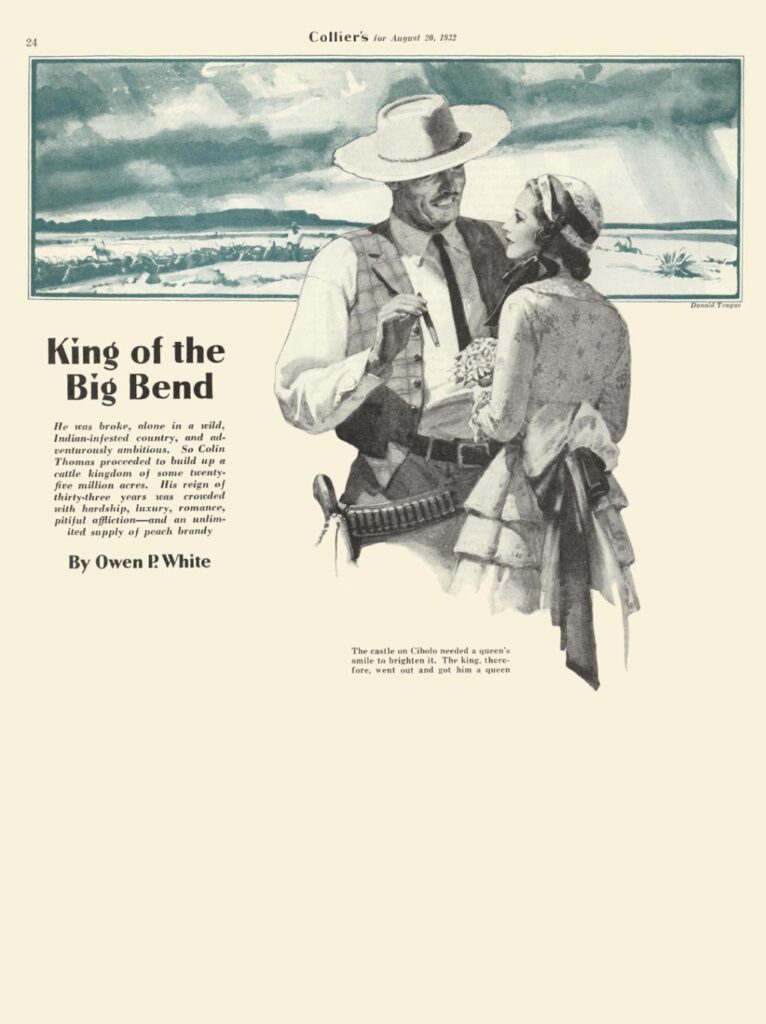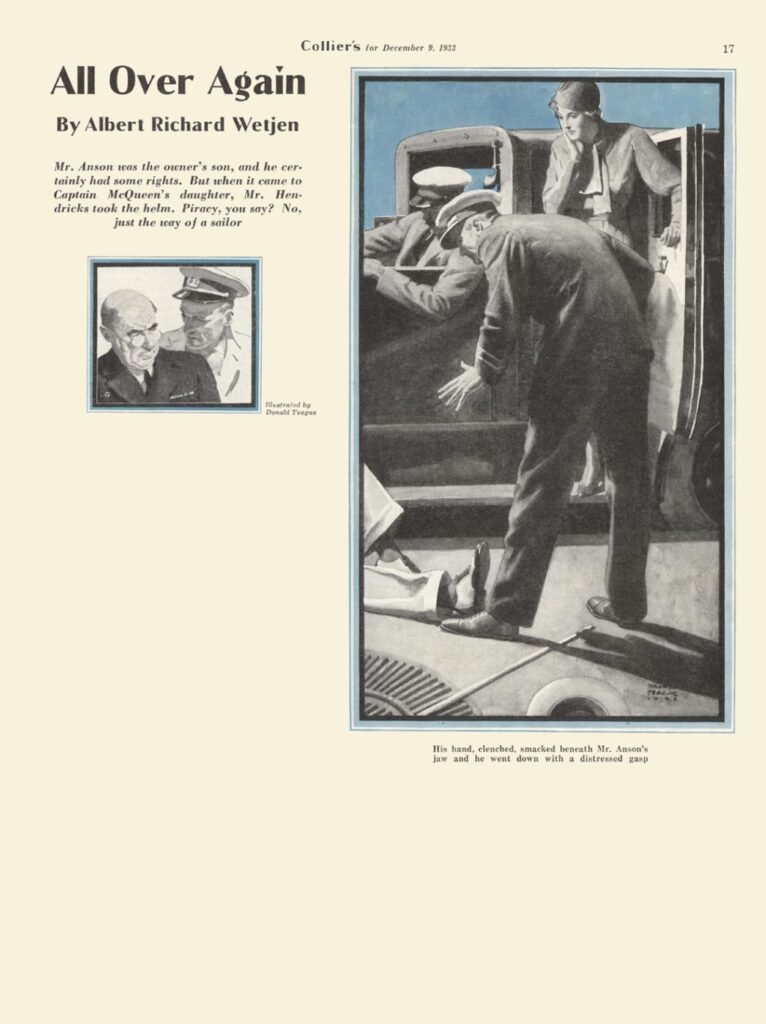Collier's 1: 1930-33
1929 was a year of transition for Teague. In the summer of 1929, while in England following and sketching the horse shows, Teague decided to work in watercolor. Many magazine illustrators of the era worked in watercolor, as it was generally easier to reproduce than oil. When he left for England, I imagine that Teague knew he was going to be let go by The Post, with sufficient lead time to line up new work. I imagine Teague decided that the time was right to transition over to watercolor – a new start in a new medium.
When he returned to New York, Teague showed his recent work to Henry Quinan. Quinan was the art director for Crowell-Collier, publishers of Collier’s Weekly, The American Magazine, and Woman’s Home Companion. Quinan was impressed with Teague’s work, and advised him to continue with watercolor. Quinan told Teague that he would give him all the work he could handle as he established himself in the new medium. Thus after a period of uncertainty, Teague secured work to carry him through the Great Depression.
Below I begin by presenting a full color sample page that Quinan ran to see how Teague’s 1929 work would reproduce. The text does not match the illustrations, and Teague’s handwritten notation is in the bottom right – “Henry Quinan made up these sample preps of my first watercolors for illustration purposes. 1929.” This is followed by a representative sample of story illustrations from the period 1930-1933. Story text has been omitted for a cleaner presentation.









